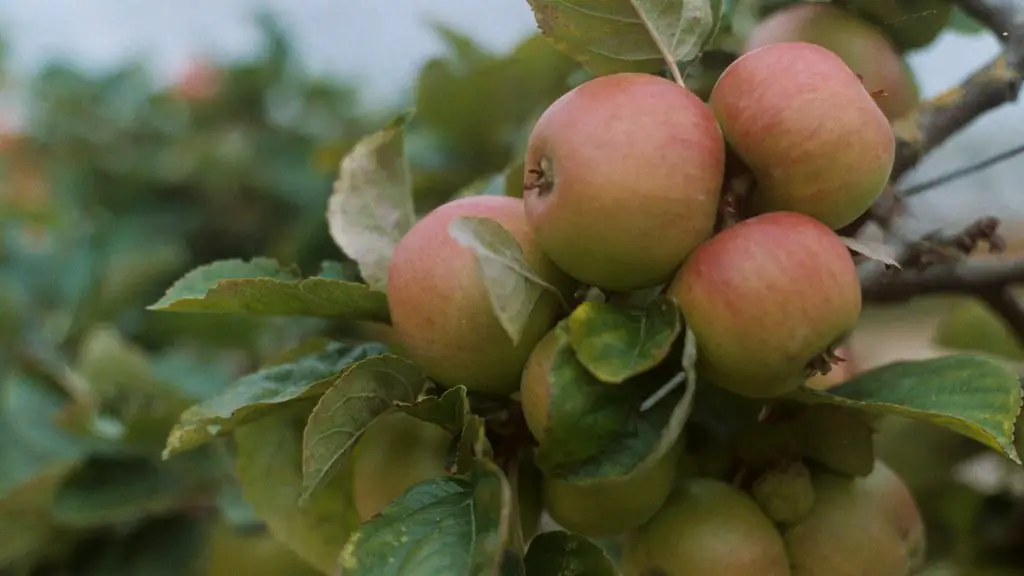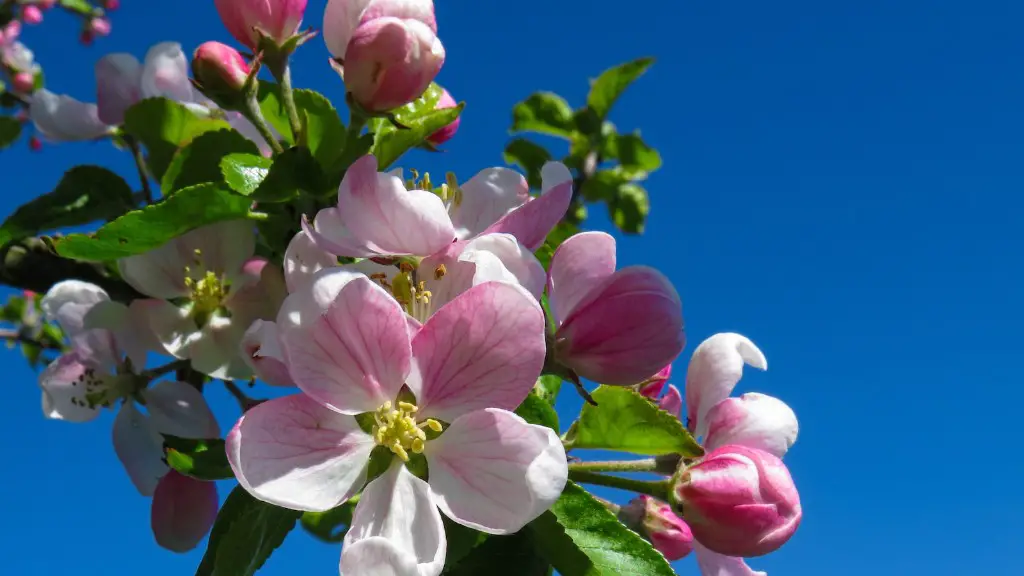Apple trees must be sprayed regularly to keep them healthy and productive. When deciding when to spray an apple tree, growers must consider a variety of factors. The most important factor to consider is the life cycle of the targeted insects. Other factors include growth stages of the apple tree, time of season, and local weather conditions. This article will explain which factors must be considered when deciding when to spray an apple tree.
The primary factor in determining when to spray is the life cycle of the targeted insect. Insects have different lifecycles, and the particular life cycle of the insect will help dictate when the apple tree must be sprayed for optimal insect control. If the insect is in its early larval stage, for example, the tree must be sprayed during that stage in order for the insecticide to be effective.
In addition to the life cycle of the insect, growers must also consider the growth stages of the apple tree. Different stages of tree growth respond differently to insecticide treatments. Young trees are more vulnerable to insect injury but can still be effectively treated if they are sprayed at the right time. When determining whether to spray the apple tree, it is important to consider what stage of growth it is in.
The time of season is another important factor to consider when determining when to spray an apple tree. Different types of insects have different life cycles, and the time of season will dictate when the apple tree must be sprayed. If the insect is in its peak activity period, it is important to spray the tree in a timely manner in order to prevent maximum damage from occurring.
Local weather conditions should also be taken into account when deciding when to spray the apple tree. If the weather is too humid or too dry, the insecticide may not be as effective. If the weather is too hot or too cold, the insecticide may be less effective or even inappropriate for use. Additionally, windy conditions can cause the spray to be less effective as it can reduce the amount of insecticide that reaches the apple tree.
Overall, growers must consider a variety of factors when deciding when to spray an apple tree. The primary factor to consider is the life cycle of the targeted insect, but other factors such as growth stages of the apple tree, the time of season, and local weather conditions should all be taken into account to ensure effective insect control.
Spray Types and Coverage
Once a decision has been made as to when to apply an insecticide spray, growers must then determine what type of spray to use and how much coverage is needed. Different insecticides are available, and each has its own specific uses. For example, contact sprays target only the insects on the surface of the tree, while systemic insecticides spread through the entire tree and target insects at all stages of the life cycle. Additionally, different spray coverage is needed depending on the size of the apple tree and the number of insects that must be targeted.
Application Equipment
Growers must also consider the type of equipment they will use to apply the insecticide. Different types of equipment can be used, such as handheld sprayers, backpack sprayers, and animal-drawn wagons. The right equipment is important in order to ensure adequate coverage of the target area. Additionally, some equipment may be better suited for certain types of sprays, so this should be taken into consideration when selecting the appropriate application equipment.
Frequency of Sprays
Finally, growers must consider how often the apple tree should be sprayed. Different insecticides have different reapplication rates, so it is important to check the label of the product to ensure that it is appropriate for the particular insect. Some insecticides may require more frequent spray applications than others, so it is important to check this before making a decision.
Safety Precautions
It is also important to consider safety precautions when spraying an apple tree. Growers must ensure that they follow the instructions on the product label, as improper handling of insecticides can have serious health consequences. Additionally, protective clothing and eyewear should be worn while spraying, as the insecticide may be dangerous if it comes into contact with skin or eyes.
Environmental Impact
Finally, growers should keep in mind the potential environmental impacts of spraying an apple tree. Different insecticides have different effects on the environment, so it is important to choose a product that is appropriate for the particular situation. Additionally, care should be taken to ensure that the insecticide is not washed off into nearby streams or lakes, as this can cause negative impacts on the local ecosystem.
Evaluation of Results
It is also important to evaluate the results of the spray application. By monitoring the number of insects on the apple tree, growers can determine if the spray application was successful or if an additional treatment is needed. Additionally, checking for uptake of the insecticide can also help indicate whether the spray application was successful.
Foliar Symptoms
Growers should also be aware of foliar symptoms that may indicate that the insecticide has caused damage to the apple tree. If whitish stippling or yellow discoloration is seen, this may indicate that the insecticide has been over-applied or applied at the wrong time. If this occurs, it is important to reduce the amount of insecticide applied and/or delay the next application.
Conclusion
In conclusion, deciding when to spray an apple tree is an important part of insect management. Factors such as the life cycle of the targeted insect, the growth stage of the apple tree, the time of season, and local weather conditions all need to be taken into account when deciding when to spray. Additionally, growers must consider which type of insecticide to use, how much spray coverage is needed, what type of equipment to use, how frequently to reapply the insecticide, and any safety precautions or environmental impacts associated with the spray application. Finally, growers must evaluate the results of the spray application and monitor for foliar symptoms to ensure the tree is healthy and productive.


